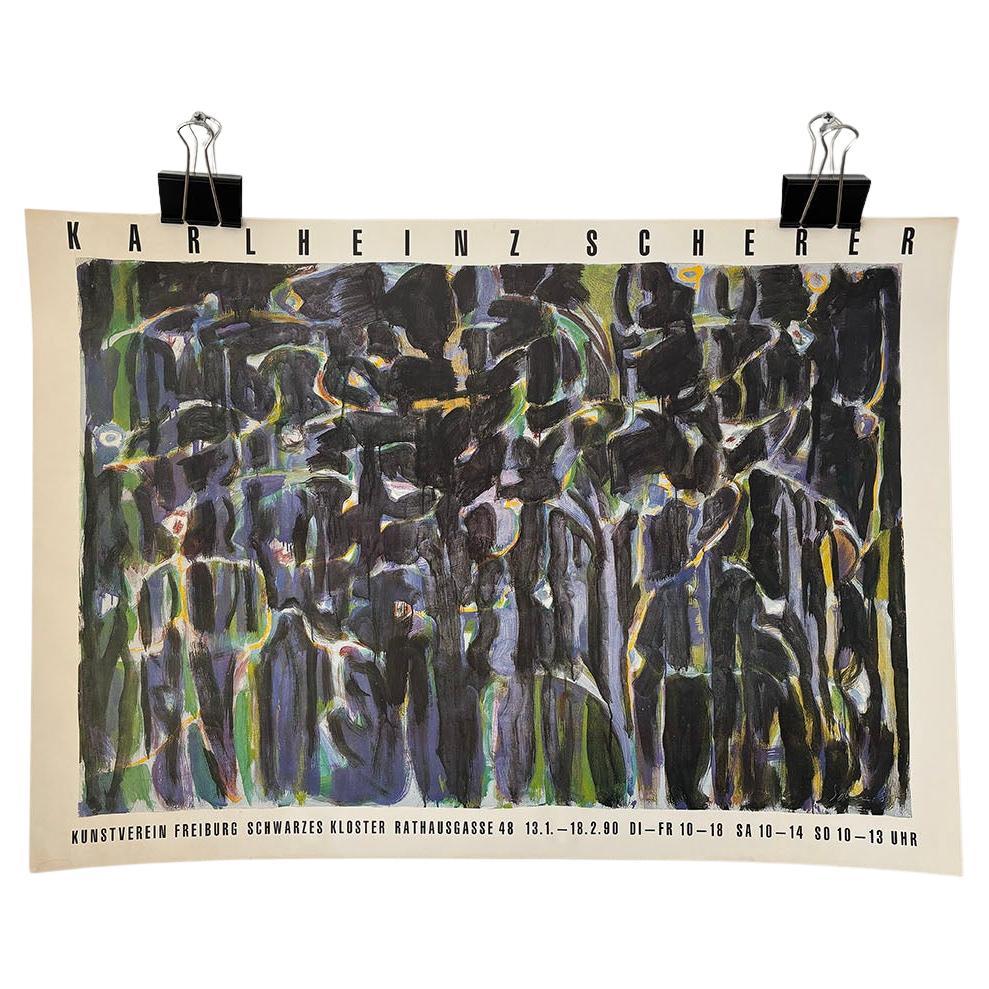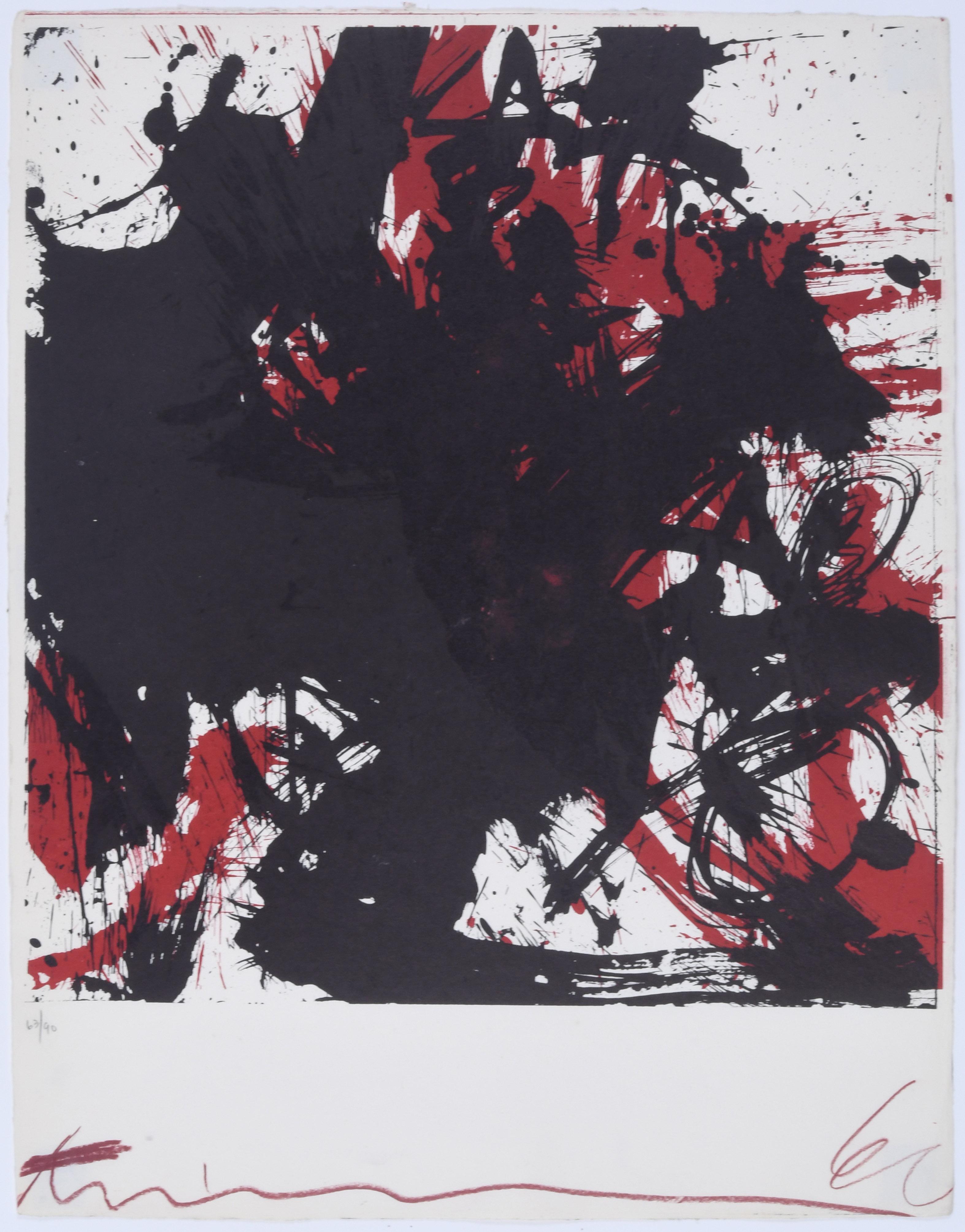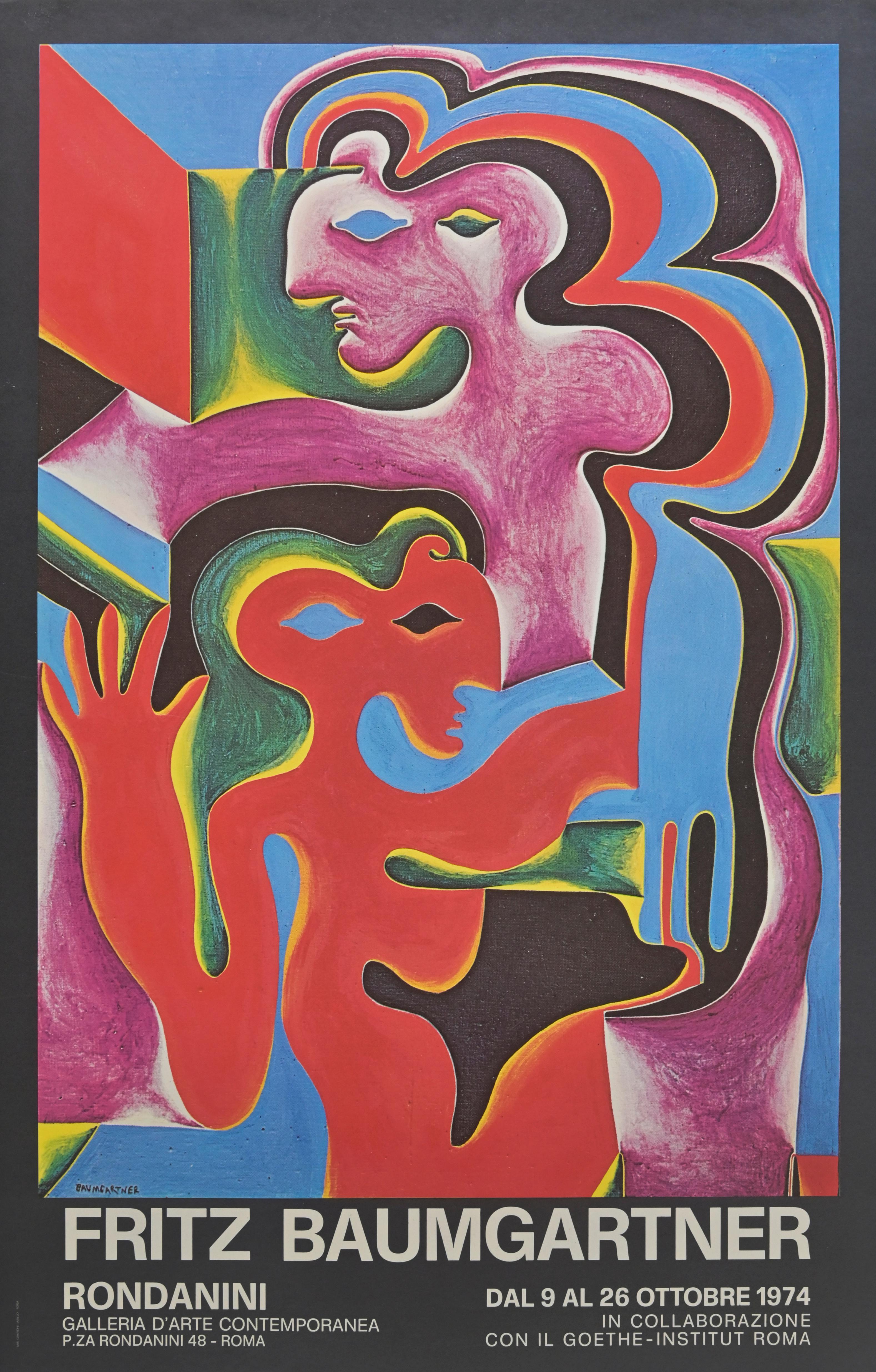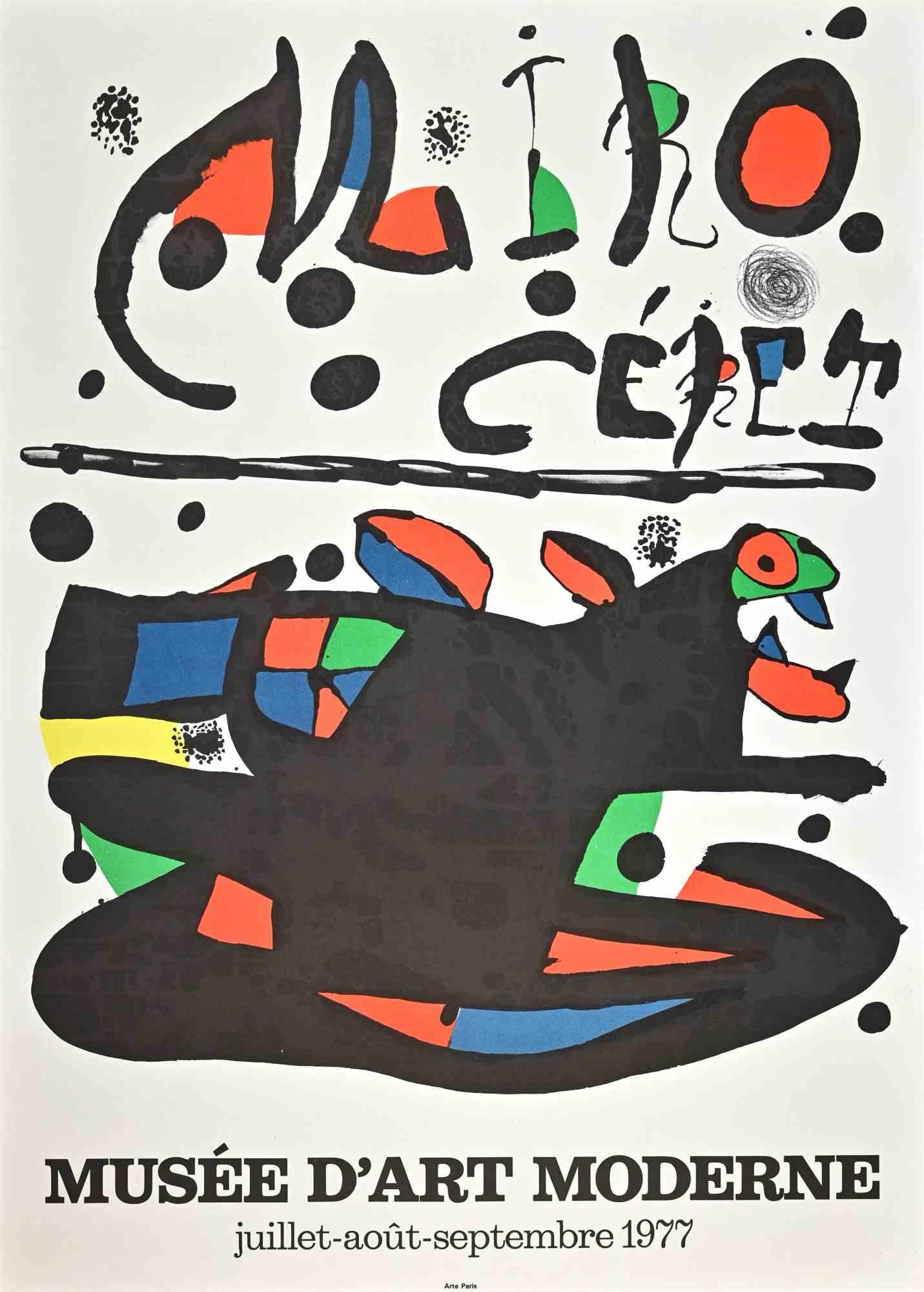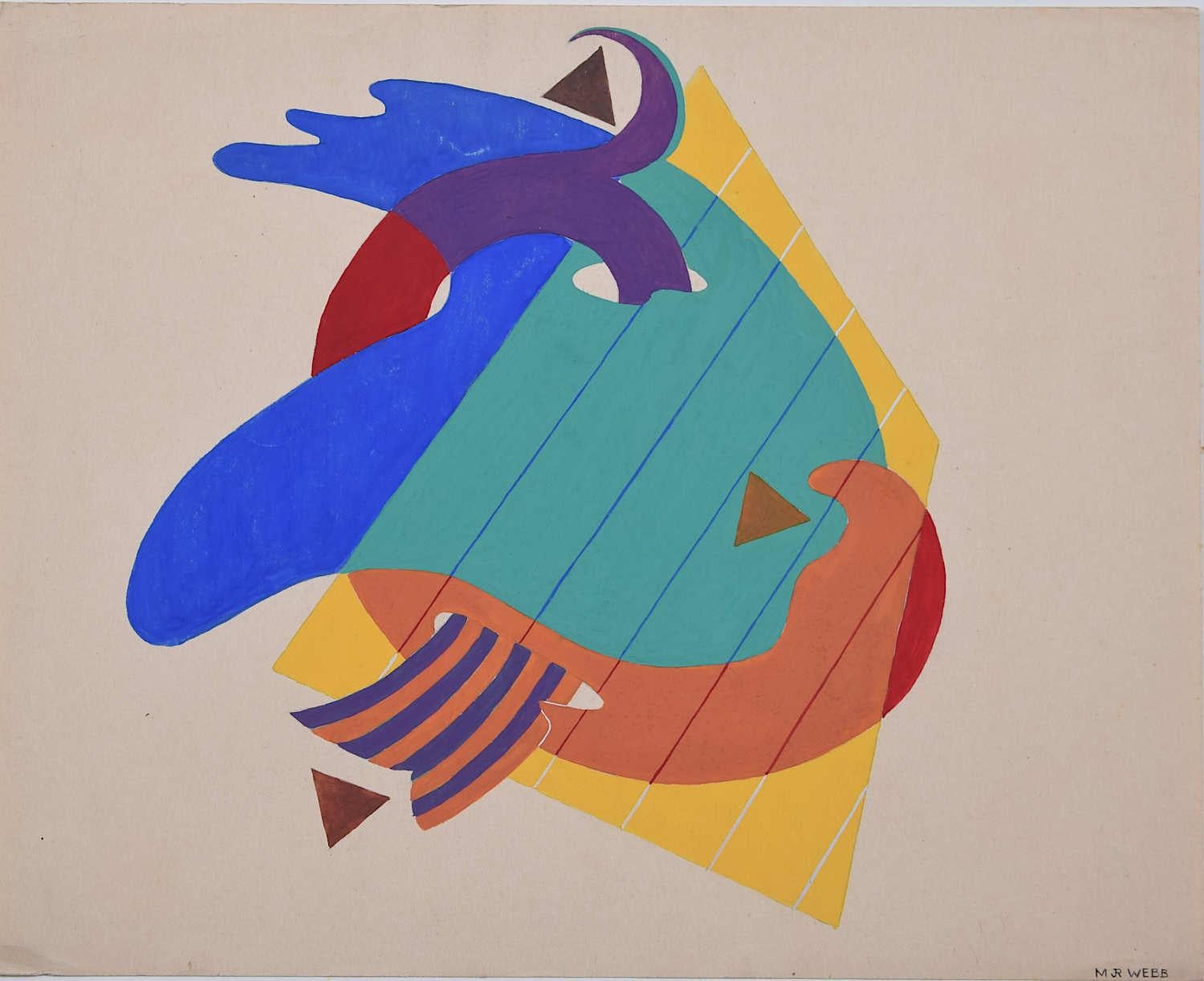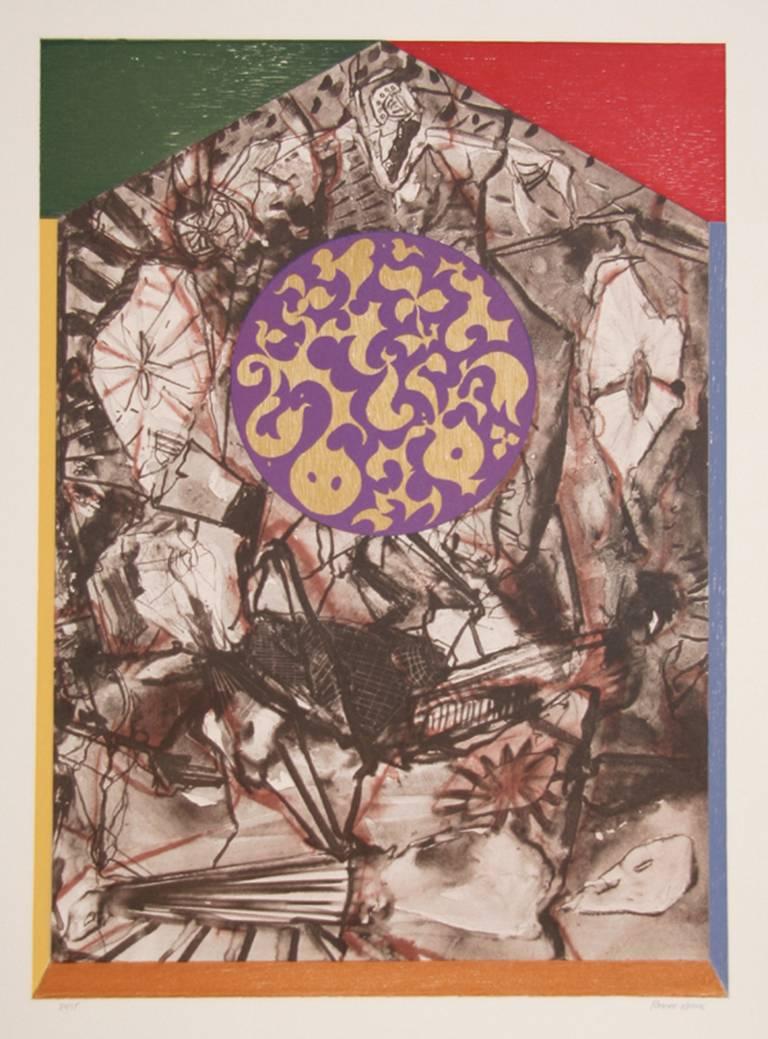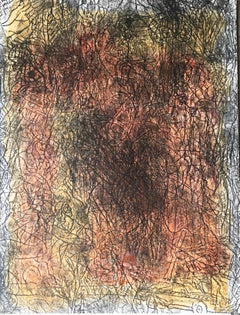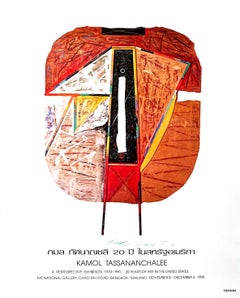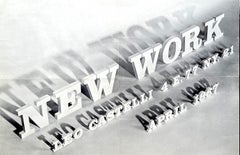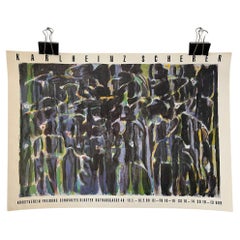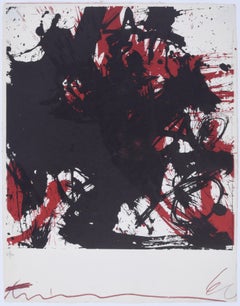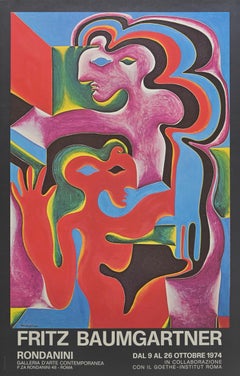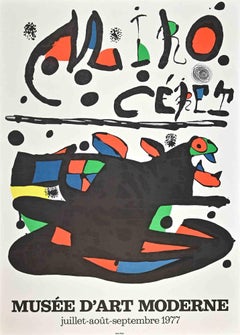Items Similar to Westermann and Kapsalis Sculpture at Four Fourteen Art Center Poster
Want more images or videos?
Request additional images or videos from the seller
1 of 8
HC WestermannWestermann and Kapsalis Sculpture at Four Fourteen Art Center Poster1957
1957
$10,000
£7,627.31
€8,685.66
CA$14,053.05
A$15,326.83
CHF 8,119.12
MX$183,746.88
NOK 103,401.48
SEK 94,552.98
DKK 64,890.36
About the Item
H.C. Westermann, Thomas Kapsalis
Rare artist designed early poster: Westermann and Kapsalis Sculpture at Four Fourteen Art Center and Gallery Chicago, 1957
Historic offset lithograph poster designed by both artists
Not signed
17 × 22 inches
Unframed
This extremely rare poster on handmade paper was published for the Tom Kapsalis/H.C. Westermann sculpture exhibition at 414 Art Workshop and Gallery, Chicago Momentum, 1020 Art Center, Chicago in December 1957. The poster was hand designed by both artists, with each one designing his respective half for a cohesive whole, for an exhibition at a small, now defunct regional art center in the late fifties -- so it's not unreasonable to believe that there just aren't too many of these out there anymore. A must have for anyone seriously involved in the careers and legacies of each or both of these sculptors.
About H.C. Westermann:
American artist Horace Clifford Westermann (Los Angeles, 1922 – Danbury, 1981) assembled a distinctive and singular body of sculptures. His works were predominantly made from wood through his masterly command of carpentry and cabinetmaking, yet he also used other techniques and materials such as metal, glass and enamelling with incredible precision. Without adhering to one particular style, Westermann was a maker of objects, of separate pieces: his sculptures, laden with meaning, often irony, result from the processing of experience, coalescing to yield specific fragments of reality.
It is the course of these fragments that the retrospective presented by the Museo Reina Sofía follows. A concern with going back to shelter would soon emerge, be it in the home or the body —and blighted by the threat of confinement and death. Also, stubborn or helpless figures would recur through Westermann’s oeuvre. The motif of the “death ship” runs right through the breadth of his production as well, pointing, on one side, to continued wandering and latent abandonment and, on the other, to a determined pursue of refuge which seems to hold firm across his work.
At the turning point of the 1960s, Westermann’s sculptures drew from mass culture, and made part of several exhibitions of the new realisms, when the “cold” tag of Pop art had not yet fully taken shape. The exhibition presents this output and the “specificity” of Westermann’s objects, which interested Donald Judd in 1963. In later pieces his work increasingly deals with the absurd, either through playfulness with language, in the confusion between work and instrument, or with references to the impermanent
Besides the sculptures, the show displays Westermann’s paintings, letter-drawings —in his correspondence with other artists, critics and friends— and series of prints, in which he applied vibrant colours to address themes such as an escapist, while critical depiction of the American scene; catastrophe, and fragility.
A graduate from the School of the Art Institute of Chicago in 1954, Horace Clifford Westermann produced most of his work from a small town in Connecticut, where he settled in 1961. He regularly exhibited his work in New York, and occasionally in Chicago and on the West Coast.
Courtesy of Venus Over Manhattan
About Tom Kapsalis:
One of Chicago’s great abstractionists, painter Thomas H. Kapsalis (born 1922) has been an important artist and educator since the late ’40s, when he graduated from the School of the Art Institute. A prisoner of war in Germany, captured during the Battle of the Bulge, Kapsalis returned to continue his pursuit of art-making, eventually returning to Germany in the early ’50s on a Fullbright-Hays Fellowship to study with Willi Baumeister. He has taught at the School of the Art Institute since 1954, and his work has been exhibited in numerous group and solo shows. Among the honors bestowed upon Kapsalis are Huntington Harford Foundation Grants (1956, 1959); Robert Rice Jenkins Prize, Chicago & Vicinity Exhibition, Art Institute of Chicago (1956); Pauline Palmer Prize, Chicago & Vicinity Exhibition, AIC (1960); Mr. & Mrs. Julie F. Brower Prize, Chicago & Vicinity Exhibition, AIC (1969).
Courtesy of Corbett vs Dempsey
Publisher:
Four Fourteen Art Center and Gallery
- Creator:HC Westermann (1922 - 1981, American)
- Creation Year:1957
- Dimensions:Height: 17 in (43.18 cm)Width: 22 in (55.88 cm)
- Medium:
- Movement & Style:
- Period:
- Condition:
- Gallery Location:New York, NY
- Reference Number:1stDibs: LU1745213095392
About the Seller
5.0
Gold Seller
Premium sellers maintaining a 4.3+ rating and 24-hour response times
Established in 2007
1stDibs seller since 2022
471 sales on 1stDibs
Typical response time: 1 hour
- ShippingRetrieving quote...Shipping from: New York, NY
- Return Policy
More From This Seller
View AllThou Shalt Not Make Graven Images (The Second Commandment), Lithograph Signed/N
Located in New York, NY
Joseph Nechvatal
Thou Shalt Not Make Graven Images (The Second Commandment), 1987
3 Color lithograph on Arches paper with deckled edges
Signed and numbered from the limited edition of 84 on the front
24 × 18 inches
Unframed
This three color lithograph on Arches paper with deckled edges is pencil signed, dated and numbered from the limited edition of 84. This classic Nechvatal print was created as part of the 1987 portfolio "The Ten Commandments", in which ten top Jewish American artists were each invited to choose an Old Testament commandment to interpret in contemporary lithographic form. The "Chosen" artists were, in order of Commandment: Kenny Scharf, Joseph Nechvatal, Gretchen Bender...
Category
1980s Abstract Abstract Prints
Materials
Lithograph
Samaras at Whitney Museum of American Art Exhibition Poster
By Lucas Samaras
Located in New York, NY
Lucas Samaras
Samaras at Whitney Museum of American Art Exhibition Poster, 1973
Offset lithograph poster
32 × 24 inches
Unframed
This early vintage poster was published for the Samar...
Category
1970s Abstract Abstract Prints
Materials
Lithograph, Offset
Retrospective exhibition poster, The National Gallery, Thailand (Hand signed)
Located in New York, NY
Kamol Tassananchalee
Retrospective exhibition poster The National Gallery, Thailand (Hand signed), 1990
Offset lithograph poster
Hand signed and dated by Kamol Tassananchalee in blu...
Category
1990s Abstract Abstract Prints
Materials
Lithograph, Offset
Leo Castelli Gallery mailer (Roy Lichtenstein, Frank Stella, John Chamberlain)
Located in New York, NY
Rare, historic collectors item:
Roy Lichtenstein, Frank Stella, John Chamberlain
New Work, Leo Castelli poster, 1967
Offset lithograph poster invit...
Category
1960s Pop Art Abstract Prints
Materials
Lithograph, Offset
5745 Jewish Museum Hanukkah original Signed/n abstract expressionist screenprint
By Nancy Graves
Located in New York, NY
Nancy Graves
5745, for the Jewish Museum, 1984
Silkscreen on paper
Signed, numbered 5/90 and dated in graphite pencil on the front; bears publishers' blind stamp front left corner
3...
Category
1980s Abstract Expressionist Abstract Prints
Materials
Screen
Untitled Abstraction
Located in New York, NY
Leslie B. Weissman
Untitled abstraction, 2016
Acrylic and mixed media painting on paper
15 × 18 inches
Pencil signed and dated by the artist on the lower left front
Unframed
Biography:
Leslie B. Weissman (b. 1966, NYC)
Education:
Hobart and William Smith Colleges BA 1988 Art and Economics
New York University / Tisch MPS 1991
Recent and Upcoming Exhibitions:
PFLAG Pride In Bloom Exhibit and benefit Auction October 2020
Blue Door Gallery - Yonkers, NY Group Show, Global Expressions September 12, to October 24, 2020
Blue Door Gallery - Yonkers, NY Group Show, Summer Blues July 24, to August 29, 2020
Blue Door Gallery - Yonkers,, NY Group Show, Kinda Blue October-November 2018
Riverfront Art Gallery - Yonkers,, NY Group Show, Womantide March-April 2019
Blue Door Gallery - Yonkers,, NY Group Show, Kinda Blue October-November 2018
Morgan Stanley Corporate Headquarters - Purchase, NY September-October 2018
The Art Closet Gallery March 2018 Selected Works
Artist in Residence Chappaqua Performing Arts Center 2018 New Castle Board Inauguration conducted by President Bill Clinton
Katonah Museum AA at NWHC September 2017-March 2018
Left Fields Gallery SAN LUIS OBISPO, CA - 12/18-1/17/16 FORM IS NOT DIFFERENT FROM EMPTINESS -
Curated by Ryan Schneider...
Category
2010s Abstract Abstract Paintings
Materials
Mixed Media, Acrylic
You May Also Like
Museum Print Abstract Artwork by Karlheinz Scherer
Located in Rümmingen, BW
The posters and prints may display signs of aging, such as paper discoloration, tears, folds, and other imperfections.
These pieces were part of an art collection owned by a German architect, who carefully sourced them over the past 50 years.
This is a vintage Museum poster...
Category
Mid-20th Century German Mid-Century Modern Prints
Materials
Paper
$155 Sale Price
35% Off
Untitled (Martha Jackson Gallery Poster)
By Walasse Ting
Located in Fairlawn, OH
Untitled (Martha Jackson Gallery Poster)
Lithograph, 1960
Signed and dated in red crayon by the artist
Edition 90 (63/90)
1st state before letters for the poster created for the Martha Jackson Gallery, Ting Exhibition, April 23-May 31, 1960
Printed on wove paper with a ”JAPAN' watermark
Edition: 90
Provenance: Martha Jackson Gallery, New York
Anderson Gallery
David K. Anderson Collection (label)
Walasse Ting (Chinese: 丁雄泉, 13 October 1929 – May 17, 2010)[1] was a Chinese-American visual artist and poet. His colorful paintings have attracted critical admiration and a popular following. Common subjects include nude women and cats, birds and other animals.
He was born on 13 October 1929 in Shanghai, left China in 1946 and lived for a while in Hong Kong, then settled in Paris in 1952.[2] There, he associated with artists such as Karel Appel, Asger Jorn, and Pierre Alechinsky, members of the avant-garde group CoBrA. Ting started his career as an artist in Paris in the 1950s, where he became friends with artists such as Sam Francis and Pierre Alechinsky. His early works were influenced by the CoBrA group, a European art movement known for its use of expressive, childlike imagery. In the 1960s, Ting moved to New York City and became associated with the Pop Art movement. Ting is perhaps best known for his series of paintings featuring women, which he called "Cat Women...
Category
1960s Abstract Abstract Prints
Materials
Lithograph
Manifest of Fritz Baumgartner - Vintage Offset Poster - 1974
By Fritz Baumgartner
Located in Roma, IT
Vintage poster after Fritz Baumgartner is a vintage offset artwork on paper realized in 1974.
Original colored offset.
Good condition and aged.
Titled on the bottom center.
The ...
Category
1970s Abstract Abstract Prints
Materials
Paper, Offset
Vintage Poster Modern Art Museum - 1977
Located in Roma, IT
Vintage Poster Modern Art Museum is a vintage Lithograph and Offset poster realized after Joan Mirò (1893-1983) in 1977.
Good conditions.
Joan Miró (20 April 1893 – 25 December 198...
Category
1970s Surrealist Abstract Prints
Materials
Offset, Lithograph
Abstract Form, vintage poster design by M R Webb
Located in London, GB
M R Webb
Abstract Form
21 x 26 cm
Signed to lower right
Provenance: Family of A. E. Halliwell
Little is known about A Searle beyond the fact that he studied under A E Halliwell, th...
Category
1940s Abstract Abstract Paintings
Materials
Gouache
Untitled 2, Abstract Lithograph and Woodcut Print by Robert Kuszek
By Robert Kuszek
Located in Long Island City, NY
Artist: Robert Kuszek
Title: Untitled 2
Year: circa 1990
Medium: Lithograph and Woodcut, Signed and numbered in Pencil
Edition: 35
Paper Size:30 x 22 inches...
Category
1990s Abstract Abstract Prints
Materials
Lithograph, Woodcut
More Ways To Browse
Basmat Levin
Bortnyik Sandor
Butter Prints
Calder Lithograph Calder Signed
Damien Hirst Etching
Damien Hirst Heart
Dan Namingha Bronze Sculpture
Dan Namingha Bronze
Donald Judd Untitled
Frank Stella Etching
Galerie Rive Gauche
Gerhard Hoehme
Gustave Moeller
Hamanishi Katsunori
Hors D Commerce
Inuit Art Prints
Jean Michel Coulon
Jean Rene Bazaine
